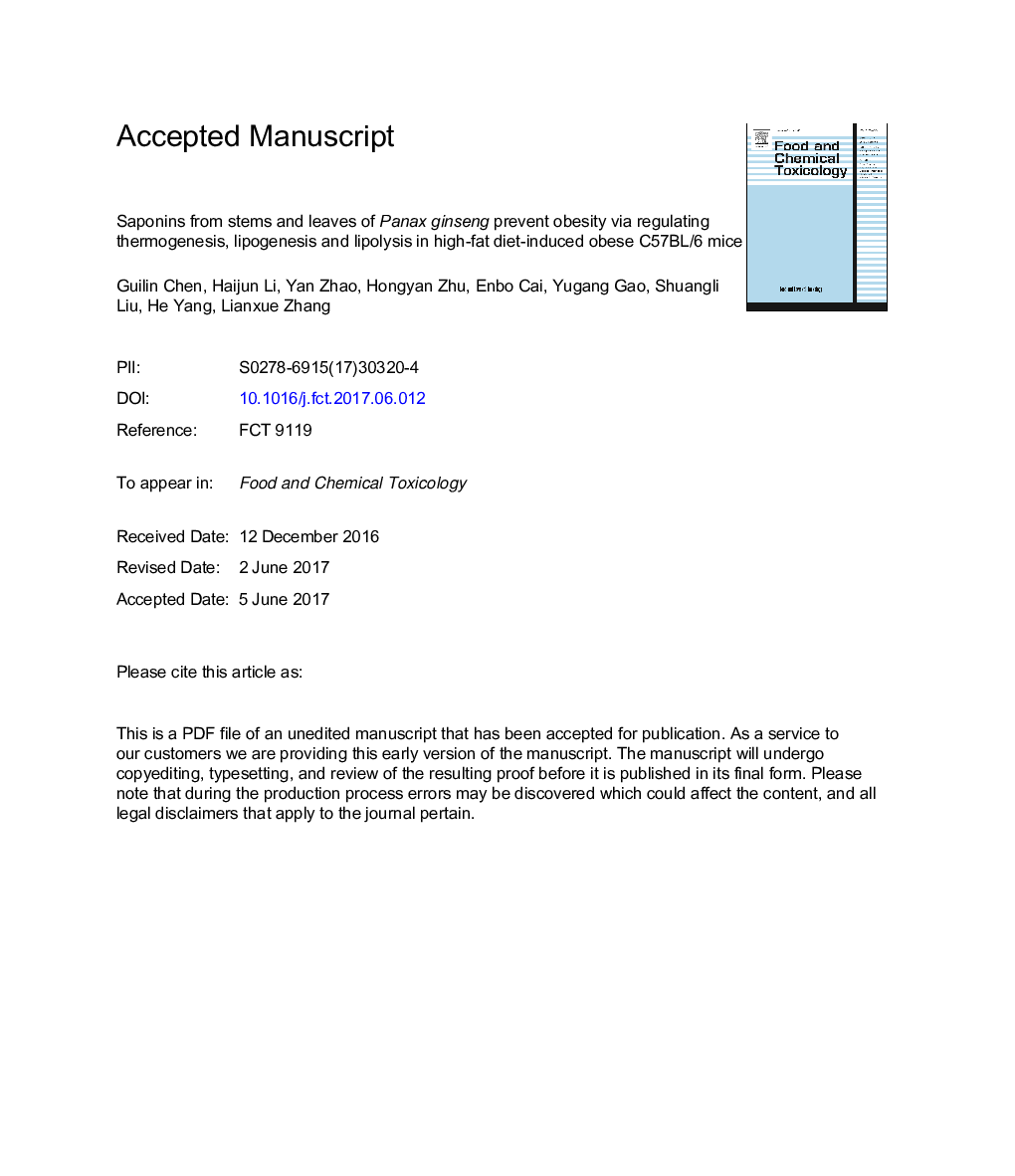| Article ID | Journal | Published Year | Pages | File Type |
|---|---|---|---|---|
| 5560137 | Food and Chemical Toxicology | 2017 | 45 Pages |
Abstract
In this study, high-fat diet (HFD)-induced obesity in mouse model was used to evaluate the dietary effect of saponins from stems and leaves of Panax ginseng (SLG), and to explore its mechanism of action in producing anti-obesity effects. The results indicate that SLG showed significant anti-obesity effects in diet-induced obese mice, represented by decreased serum levels of free fatty acids (FFA), total cholesterol (TC), triglycerides (TG), low-density lipoprotein (LDL)-cholesterol, glucose, leptin and insulin, as well as a reduction in overall body and liver weight, epididymal adipose tissue weight, and food efficiency, and inhibition of abnormal increases in acyl carnitine levels normally caused by an HFD. Additionally, the down-regulated expression of PPARγ, FAS, CD36, FATP2 and up-regulated expression of CPT-1, UCP-2, PPARα, HSL, and ATGL in liver tissue was induced by SLG. In addition, the SLG groups showed decreased PPARγ, aP2 and leptin mRNA levels and increased expression of PPARα, PGC-1α, UCP-1 and UCP-3 genes in adipose tissues, compared with the HFD group. In short, SLG may play a key role in producing anti-obesity effects in mice fed an HFD, and its mechanism may be related to regulation of thermogenesis, lipogenesis and lipolysis.
Keywords
PPARαFATP2UCPSLGHSLCPT-1LFDAP2PGC-1αCD36PPARγHFDFASHDLRT-PCRFFAperoxisome proliferator-activated receptor alphaAtglfatty acid synthaseFree fatty acidstriglyceridepair-fedPanax ginsengcluster of differentiation 36High fat dietLow fat dietSaponinsAnti-obesityadipose triglyceride lipasehormone sensitive lipaseLDLC57BL/6 micehaematoxylin and eosinUncoupling proteinHPLChigh-performance liquid chromatographytotal cholesterolHigh-density lipoprotein-cholesterollow density lipoprotein cholesterolPeroxisome proliferator-activated receptor gamma
Related Topics
Life Sciences
Agricultural and Biological Sciences
Food Science
Authors
Guilin Chen, Haijun Li, Yan Zhao, Hongyan Zhu, Enbo Cai, Yugang Gao, Shuangli Liu, He Yang, Lianxue Zhang,
